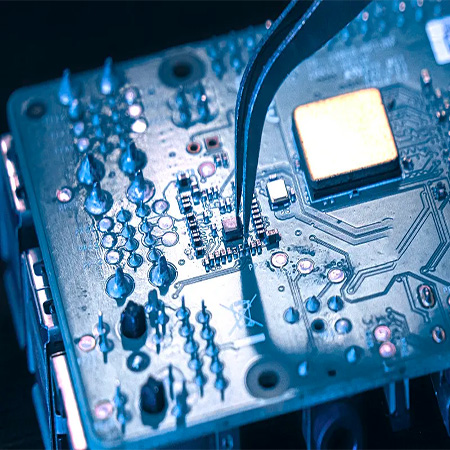The automotive industry relies on a wide array of electronic components for vehicle production. Some of the most popular and essential electronic components used in vehicles include:
 Engine Control Module (ECM)/Engine Control Unit (ECU):
Engine Control Module (ECM)/Engine Control Unit (ECU):
These units manage the engine's performance by controlling fuel injection, ignition timing, emissions, and other critical functions.
 Sensors:
Sensors:
Various sensors, such as temperature sensors, oxygen sensors, pressure sensors, and speed sensors, are used throughout the vehicle to monitor and regulate different systems.
 Microcontrollers:
Microcontrollers:
These are embedded in various systems, controlling functions like anti-lock braking systems (ABS), airbag deployment, entertainment systems, and more.

 Electric Power Steering (EPS) Systems:
Electric Power Steering (EPS) Systems:
These systems use electronic control units to assist steering, replacing traditional hydraulic systems.
 Infotainment Systems:
Infotainment Systems:
Central control units, touchscreens, and entertainment systems have become increasingly sophisticated, integrating navigation, connectivity, audio, and other features.
 Advanced Driver Assistance Systems (ADAS):
Advanced Driver Assistance Systems (ADAS):
These systems include cameras, radars, and lidars to provide features like adaptive cruise control, lane-keeping assistance, and collision avoidance.
 Battery Management Systems (BMS):
Battery Management Systems (BMS):
With the advent of electric vehicles (EVs), BMS components are crucial for managing battery performance, monitoring cells, and ensuring safety.
 Electric Motors and Controllers:
Electric Motors and Controllers:
In electric and hybrid vehicles, these components regulate power to the motors and control energy flow.
 Wireless Connectivity Modules:
Wireless Connectivity Modules:
Bluetooth, Wi-Fi, and cellular connectivity modules are integrated into vehicles for features like remote diagnostics, software updates, and connectivity with smartphones.
 LED Lighting Systems:
LED Lighting Systems:
Light-emitting diodes (LEDs) are increasingly used in automotive lighting due to their energy efficiency and durability.

When it comes to specific chip models in the automotive industry, some common chip manufacturers and models may include:
 NVIDIA Drive Series:
NVIDIA Drive Series:
These chips are widely used in autonomous driving and vehicle computing platforms, such as the NVIDIA Drive AGX platform, which includes the Xavier series and Orin series chips.
 Infineon AURIX Series:
Infineon AURIX Series:
These microcontrollers are used in vehicle control units (ECUs) and safety systems, such as vehicle stability control, brake systems, etc.
 STMicroelectronics SPC5 Series:
STMicroelectronics SPC5 Series:
Used in automotive electronic control systems, including engine control units, gearbox control, chassis control, etc.
 NXP Semiconductors LPC and i.MX Series:
NXP Semiconductors LPC and i.MX Series:
Widely applied in vehicle networks and control units, such as Controller Area Network (CAN), Local Interconnect Network (LIN), instrument cluster control, etc.
 Texas Instruments Jacinto Series:
Texas Instruments Jacinto Series:
Primarily used in automotive infotainment systems and vehicle networks, providing high-performance processing and graphics acceleration.

 Renesas Electronics R-Car Series:
Renesas Electronics R-Car Series:
Focused on automotive infotainment systems and integrated in-vehicle processors, supporting high-resolution multimedia and graphics processing.
These manufacturers and models offer various chips for automotive electronic systems, covering needs ranging from autonomous driving functions to vehicle control and infotainment systems. Moreover, as technology continues to advance, new chip models constantly emerge to meet the demand of automakers for more advanced, safer, and more efficient electronic systems.




 Need Help?
Need Help?







